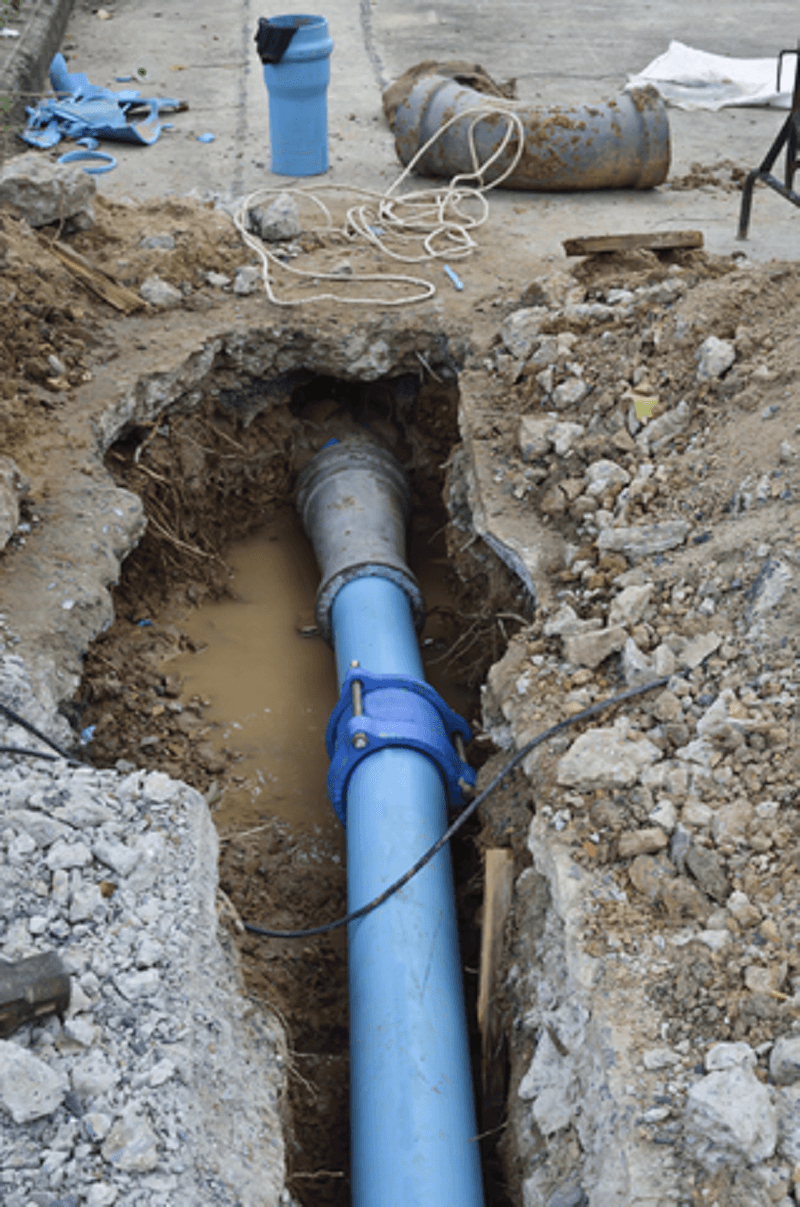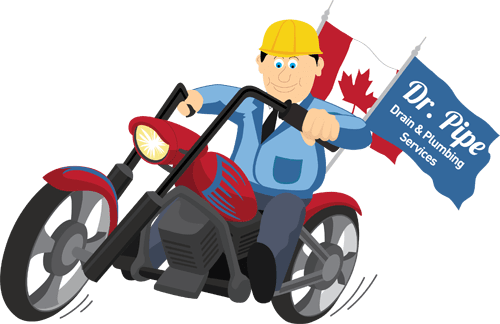Give us a call today: 416 663 4777 for a free upfront estimate!
Drain line repair is time-consuming, expensive, and cumbersome, especially if it’s not handled by experienced professionals. Credible plumbers have a set procedure in place and will determine the best solution for your drainage problems. They’ll explain what’s wrong with the line and recommend repairs that will fit your budget and circumstances.
How Do You Know If You Need Your Sewer Drain Repaired or Replaced?

If you’re having issues with the drains in your home but aren’t sure if you need your sewer drain replaced, there are some signs to look out for that our trained professionals can detect with a free inspection, such as:
- Blockages: Grease or foreign objects can build up in your pipes and block water flow
- Corrosion: Older pipes can deteriorate and break down over time
- Bellied Pipe: Improperly installed or planned lines may “belly’ which means they have sunk too low to function properly
- Leaking Joints: The seal between your pipes may have degraded and started to leak
- Root Infiltration: Tree and shrub roots may have broken into the lines
- Off-grade Pipe: Your existing pipe could have deteriorated
We can diagnose any of these issues and offer solutions to get your drains working properly.
What You Can Expect From a Professional Plumber Regarding Solutions for Proper Drain Working
1. Thorough Inspection
Excellent plumbers won’t recommend repairs unless they’re absolutely certain you need them. They value customer satisfaction and welfare more than small profits so they’ll perform a thorough inspection of your sewer system before they recommend any particular drain repairs in Toronto. Here’s what you can expect from the inspections:
- A plumber will test all of the faucets in your home to determine whether the problem is in the internal drains or the external sewer line. They’ll start from the top of your property and move to the lower floors until they identify the source of the problem.
- If it’s apparent that the problem exists in the main sewer line, the plumbers will inspect the system with a sewer camera. The footage captured by the camera will give the plumbers the full picture and they’ll be able to determine the true cause of the problem easily.
2. Solutions and Quotes
After the thorough inspection, the plumbers will explain the problem to you in detail and provide solutions. The drainage problem is in the internal systems, the plumbers will use chemical clearing agents, drain snakes, and other such solutions to address the clog. They’ll also look for leakages and water damage and replace any cracked and broken pipes.
Internal drain repairs in Toronto are relatively easy and quick. External sewer repairs need a little more care, time, and effort. Sewer lines are usually buried deep into the ground so plumbers have to access them to carry out repairs. There are three options available to you:
- The plumbers can dig a large trench to physically access the lines.
- They can dig two small trenches on either side of the damaged area and carry out trenchless repairs.
- They can reline the sewers to fix small cracks and damages.
Steps of Drain Replacement Project
A full-scale drain replacement project requires careful planning and execution so here’s what you can expect from your plumber during the project:
1. Preliminary Drain Inspection
We at Dr. Pipe won’t recommend drain replacement unless we’re absolutely certain your system needs it. First we will carry out a preliminary drain inspection where we’ll check the drainage in all important drains in your home and test the bathtubs, kitchen sinks, toilets, and other such installations to determine the source of the problem. If some drains work and others don’t, it’s very likely that the problem is in the internal systems rather than the main sewer.
2. Video Inspection
If the plumber determines the problem is in the main sewer line, it is needed to isolate the exact location of the clog. We at Dr. Pipe Drain and Plumbing use sewer video cameras for this purpose. The camera will transmit a live feed to a display above ground so the plumbers can assess it and determine the source of the problem and the general condition of the pipeline.
3. Drain Replacement
Once the location of the problem is determined, we can begin the repair work.
What Are the Drain Replacement Methods?
You have a few options for replacing your drains in Toronto and our free inspection will help determine which of these is best for your situation.
Traditional Drain Repair
This involves digging a trench to access the drain pipes. This may require using a backhoe to dig out and then refill the area when repairs are complete. The main advantage to this method is it allows us to see first hand the issue and make repairs.
Trenchless Drain Repair
This is much less disruptive to your property and requires us to dig a hole at either end of the damaged pipe, rather than exposing its entire length with a trench. Even though we could discuss the entire process in almost unlimited detail, it is simply the most cost-effective and fastest way to repair a damaged drain. Not only that, but you also have the least amount of disruption with a trenchless repair. When it comes to repairing or replacing dilapidated infrastructure assets, it has become the preferred method. Usually there are used two ways of trenchless repairs:
- Pipe Bursting: This allows us to guide new pipe through the old, damaged pipe, bursting the old pipe out of the way as it is replaced with the new drain system. This is effective on many kinds of pipe including PVC, iron, clay, terracotta, and concrete.
- Pipe Relining: Little digging is required for this method that creates a “pipe within a pipe.” This method can repair holes, seal cracks, and even repair pipes damaged by roots and rust.
Trenchless Drain Repair vs Traditional
There are benefits to trenchless drain repair for Toronto homeowners like;
- Quality: Trenchless repair uses seamless pipes that are joint free so you’re less likely to have problems in the future than if you use traditional pipes. The pipes are made from a material called HDPE which is extremely resilient and will likely last for decades to come.
- Function: The seamless pipes used in trenchless repair require less maintenance than traditional pipes and may also lead to improved flow capacity.
Sewer Replacement Cost
Though every case is different, the sooner you take care of a damaged drain, the fewer problems you’ll have down the road. Trenchless drain replacement is a more cost-effective option than traditional repair and will always save money in the long run.
What Can You Expect Choosing Us for the Repairs?
Our team of qualified and licensed plumbers will get your sewer drain replacement done quickly and professionally. You can expect every aspect of your installation to be done right including;
- A thorough video inspection of your current drain system
- Cleaning your home and yard after we’ve finished our work so that everything is just as we found it
- Coming prepared with superior tools and equipment
- We’re fully bonded and insured
- Our trade license is verified and maintained so you can be sure we are up to date with our certification
Why Dr. Pipe?
We treat your home the way we expect workers to treat our homes. That means coordinating with you from the moment you call for a quote all the way through the final work we perform. Our team will cover and clean everything in their work area so you don’t have the added stress of a mess to tidy up and we’ll finish as quickly and efficiently as possible. We can also help with insurance and obtaining any permits or the potentially valuable, cost-reducing City of Toronto rebates you may qualify for when you hire a licensed and insured company like Dr. Pipe to do any drain work that may be necessary for your repairs.
Give us a call today: 416 663 4777 for a free upfront estimate!




